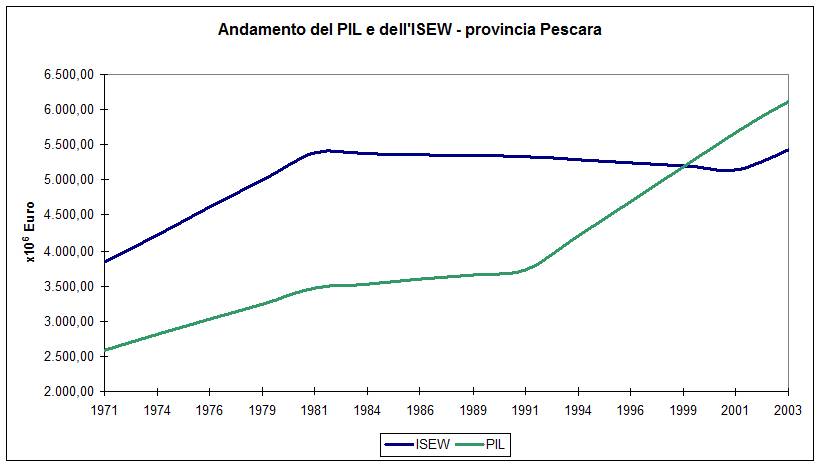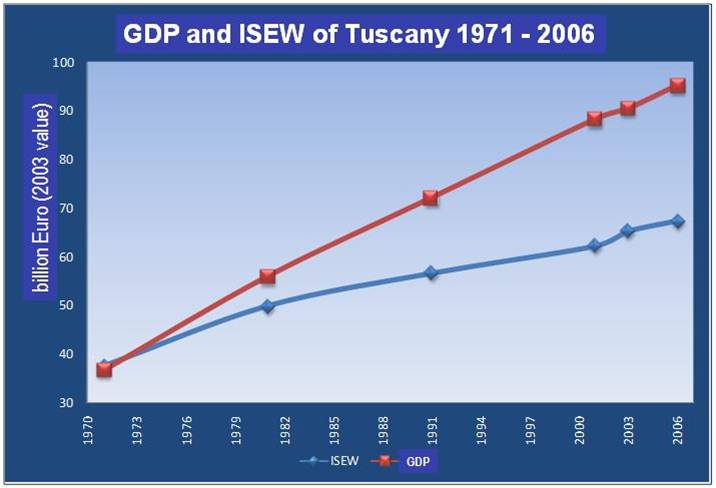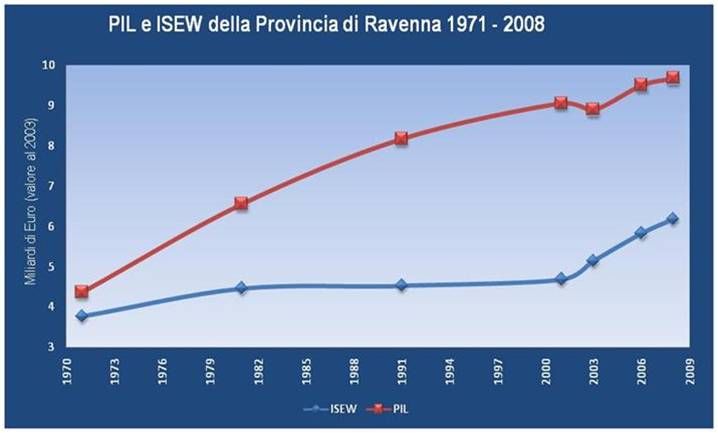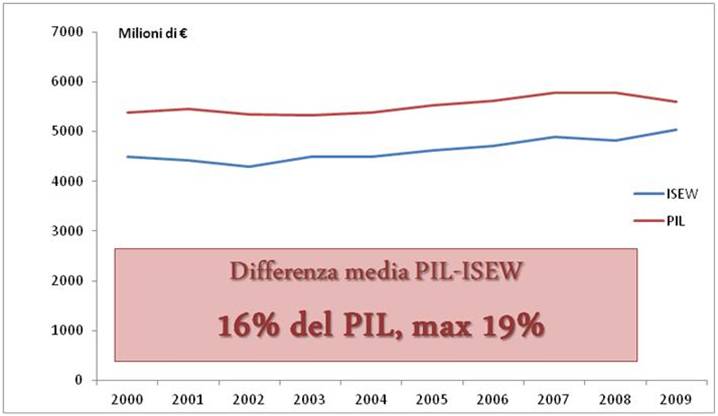Since a few years, a movement called “Beyond GDP”, also promoted by the European Union, exists (see http://ec.europa.eu/environment/beyond_gdp/index_en.html). It is inspired by the need of expanding our knowledge and capacity of producing right indicators beyond a mere economic dimension.
The Ecodynamics Group has been developing and calculating the ISEW – Index of Sustainable Economic Welfare, also known as GPI – Genuine Progress Indicator (the two indexes only differ for some items and the name).
Object
The ISEW/GPI, introduced by H.Daly e J.Cobb in 1989, is a complement of GDP, corrects some aspects of it and is able to provide a lot of information on the level of welfare of a community. The ISEW/GPI increases together with increasing GDP up to a point, beyond which it stagnates or even decreases due to stress factors, especially environmental and social ones, connected to the economic growth. In other words, not all the growth of the economic system is translated into diffuse welfare for the population and the gap between the curves represents the portion of growth disconnected from welfare.

Feasibility and purposes
Ecodynamics Group has performed some ISEW/GPI applications at the sub-national level (regional or provincial), calibrating the calculation according to the reference scale. The main result is the feasibility of these projects. In most cases we performed time series analyses, sometimes with a certain degree of approximation in line with the shortage of site specific data (this being a problem for a fair knowledge of our territories). The ISEW/GPI helps understand to what extent we can assimilate welfare to GDP. Disaggregation of the index enables to identify its components in order to highlight socio-ecological-economic criticalities of regional system and implement appropriate measures.
Cases and results
Province of Siena 1999, from Pulselli et al., The Index of Sustainable Economic Welfare (ISEW) for a local authority: a case study in Italy. Ecological Economics, Vol. 60 (1), 2006, 271-281.
This study has been one of the first cases of sub-national ISEW in the world. We demonstrated the feasibility of the calculation at that scale level.
The calculation for the Province of Siena has been then updated and included within the SPIn-Eco Project, promoted by the Province Administration and funded by the Monte dei Paschi di Siena Foundation.
Province of Modena (1971-2003) and Province of Rimini (1971-2003) from Pulselli et al., The Road to Sustainability, 2008, WIT Press, Southampton, UK.
Province of Pescara (1971-2003) from Pulselli et al., Assessing sustainable well-being: trends in environmental, social and economic policy at the local level. In Ecological Economics Research Trends, Nova Publishers, NY, 2007, 251-271.
Tuscany Region (1971-2006), from Pulselli et al., Application and use of the ISEW for assessing the sustainability of a regional system: A case study in Italy. Journal of Economic Behavior and Organization, 81, 2012, 766-778.
Province of Ravenna (1971-2008). Project of the Province Administration of Ravenna, funded by ENI spa.
Province of Imperia (2000-2009), Project ALCOTRA AERA, realized in collaboration with Chiara Paoli and Paolo Vassallo (Dept. of Earth, Environmental and Life Sciences of the University of Genova); managed by Liguria Ricerche spa. A part of the projects has been included in the MS degree thesis by Serena Pettinari.
GPI of Roma Capitale (2000-2011), MS Degree Thesis in Environment and Development Economics by Chiara Gasparoni (A.A. 2013-2014); supervised by profs. Carlo Zappia and Federico M. Pulselli








